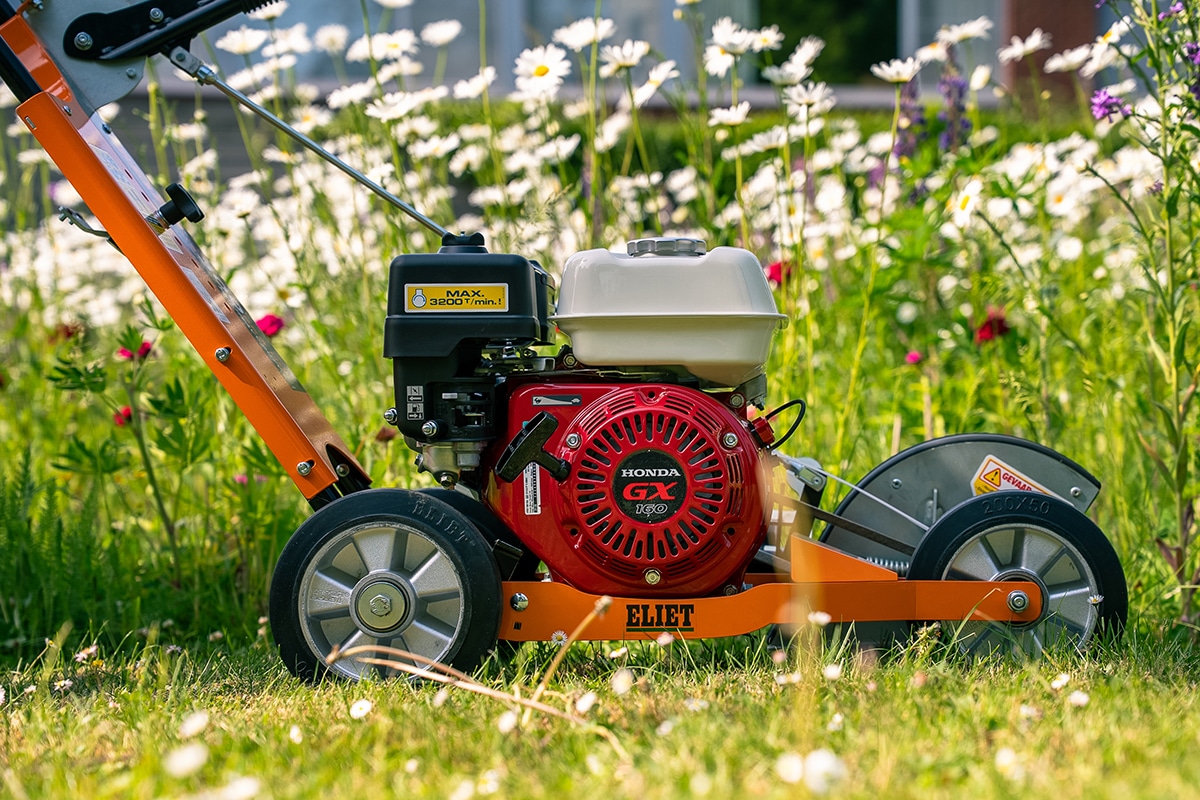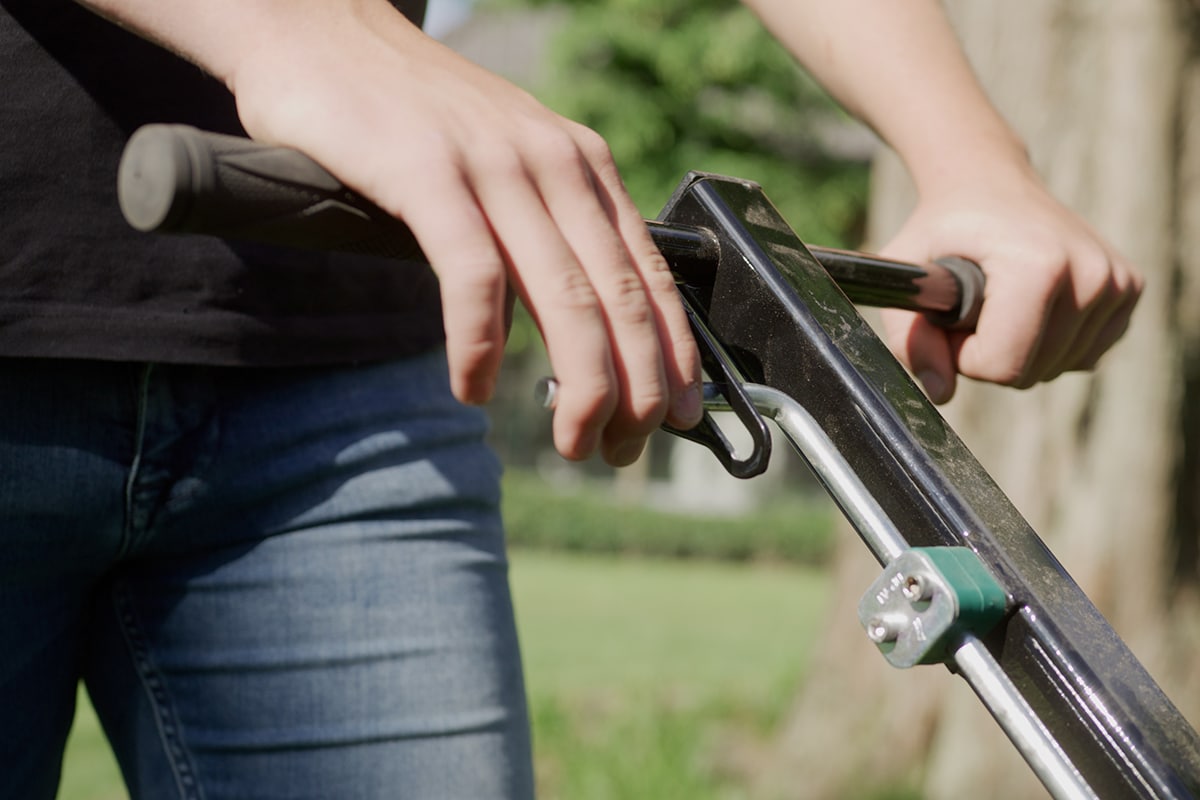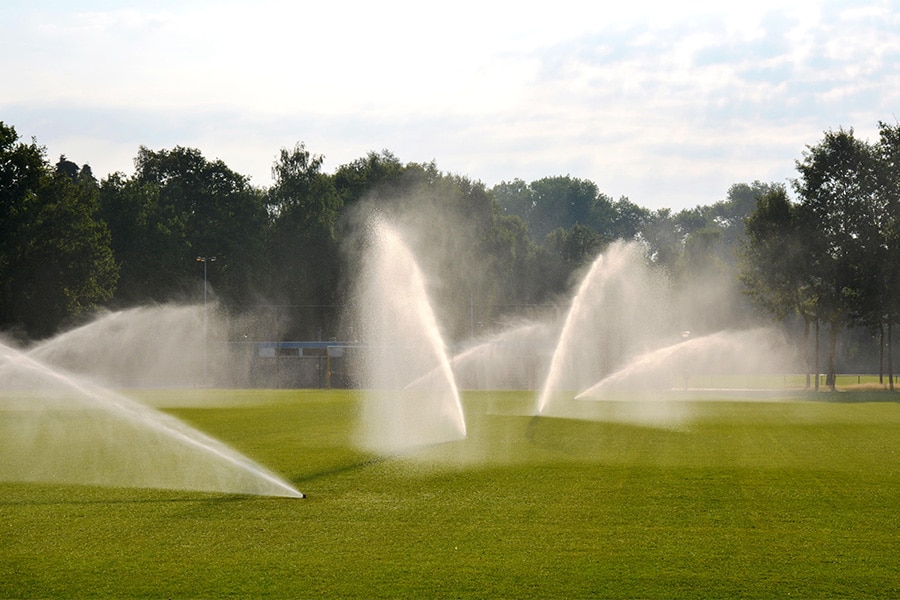
Wise irrigation of turf sports fields
After a wet spring, we seemed headed for record drought, but whether drought and heat records will be broken again in 2023 remains to be seen. One thing is certain: if the dry spells continue long enough, it will not be possible to keep all sports fields and golf courses green. After all, grass needs water for growth, recovery and cooling. Rainwater is best, but if that doesn't come, irrigation is necessary. And with that, the main question is: How do you determine when to start watering and how much water to give at a time?
Using a moisture meter then seems logical. But that only makes sense if you measure correctly and evaluate the measured values properly. Incidental measurements in the upper centimeters of the turf do not provide enough information. Moreover, the moisture percentage says little about the amount of water the grass can absorb from the soil. That varies greatly, depending on soil composition, compaction and rooting depth, among other things.
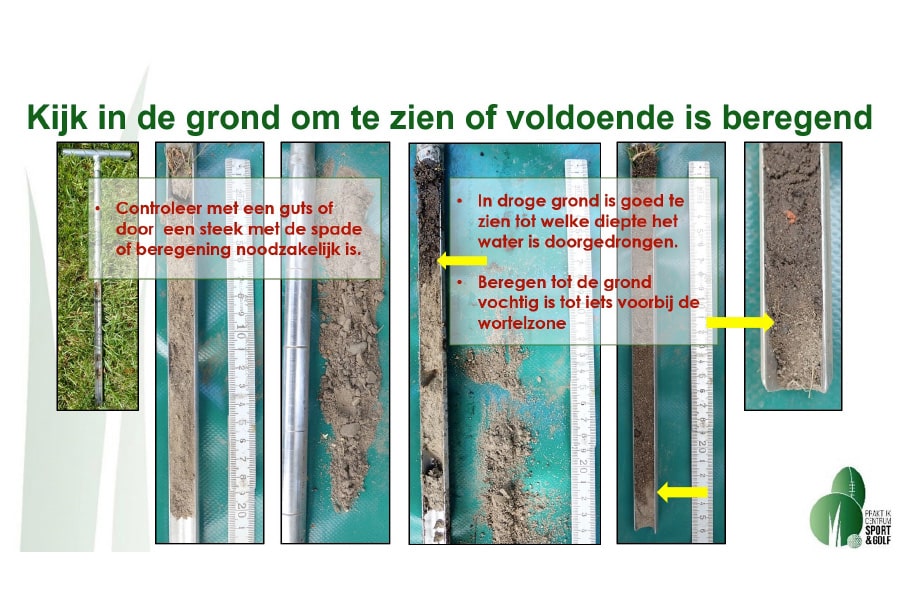
Do not irrigate too quickly and too often
In practice, we often irrigate too quickly and/or too much. It remains tempting to regularly water fields briefly during dry periods. Trainers and soccer players like to play on moist grass, and administrators and volunteers also like to see grass fresh green. Frequent watering, however, is the quickest route to a poor field. A constantly moist surface leads to superficial root growth and promotes undesirable species, such as street grass, rough legged grass and various weeds. Superficial roots do not utilize water and nutrients adequately and make the grass vulnerable to heat and desiccation. A failure of the sprinkler system or a sprinkler ban means the grass dries out quickly. It is wise anyway to make lawns more resilient to the vagaries of the changing climate.
A logical choice is to pursue a greater proportion of field meadowgrass and sometimes reed canary fescue. This goes well with striving for healthy, deep rooting. The main keys are well-rooted soil, species-oriented fertilization and, above all, a restrained irrigation regime. This means: do not start watering too early, but on time, and water less often, but with larger amounts at a time.
Grass with deep roots stays green longer
During spring, it is important to use air and water to get grass growth, and thus root growth, going well for recovery after winter. This prepares the grass for a potentially dry, hot summer. Because when the soil dries out from above, the grass responds by developing deeper roots. This is very important during hot periods, because grass roots are inactive above about 25°C (77°F). They no longer absorb moisture and nutrition, and the leaves begin to wilt. Because it is cooler deeper in the ground, grass with deep roots stays green longer. As long as the grass can evaporate water (transpiration), it keeps itself and the surface cool longer. Withering, by the way, does not mean that sports field grasses die; they go into "summer dormancy. As soon as the temperature normalizes and sufficient moisture is available, the green leaves return.
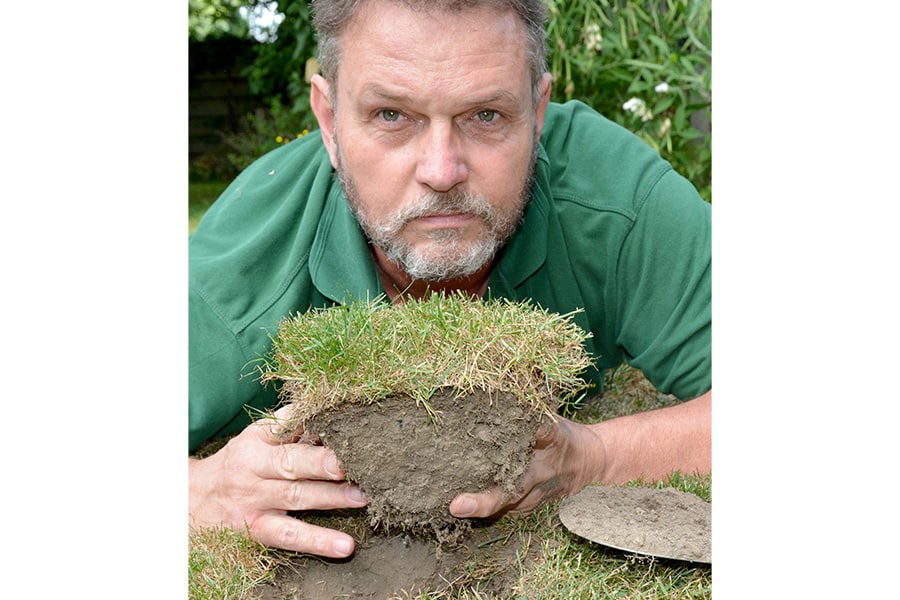
Above all, look into the ground
To determine when and how much watering is necessary, it's best to look into the ground rather than the grass. Early in the growing season, make a stab in the ground to about 25 cm depth with a gouge or spade in a few spots in the field. If the soil is very dry to that depth, and no precipitation is expected, it is wise to supplement the moisture until the soil is again well moist at a depth of 20 to 25 cm.
If aeration is also adequate, you thus stimulate turf growth and recovery after winter. By making the most of spring growth, you make the grass much more resilient to possible drought and heat in the summer and it will recover much faster after a stress period.
Also for subsequent rounds of irrigation, look mainly into the ground with a spade or gouge. In doing so, it is important to what depth you still find grass roots. In a good turf, grass roots grow at least 15 to 20 cm deep. Start watering when the bottom third of the root zone is still slightly moist. This can be easily seen by the color gradient in the soil. Water until the soil just beyond the root zone is moist again. Longer irrigation is a waste of water, and causes leaching of nutrients.
Some exceptions
Newly sprouted grass will not tolerate delayed watering in dry times; without water it will die.
If fields are unplayable because of a surface that is too hard or too sandy, then irrigation is necessary for safe sports. So it is best to take that into account.
